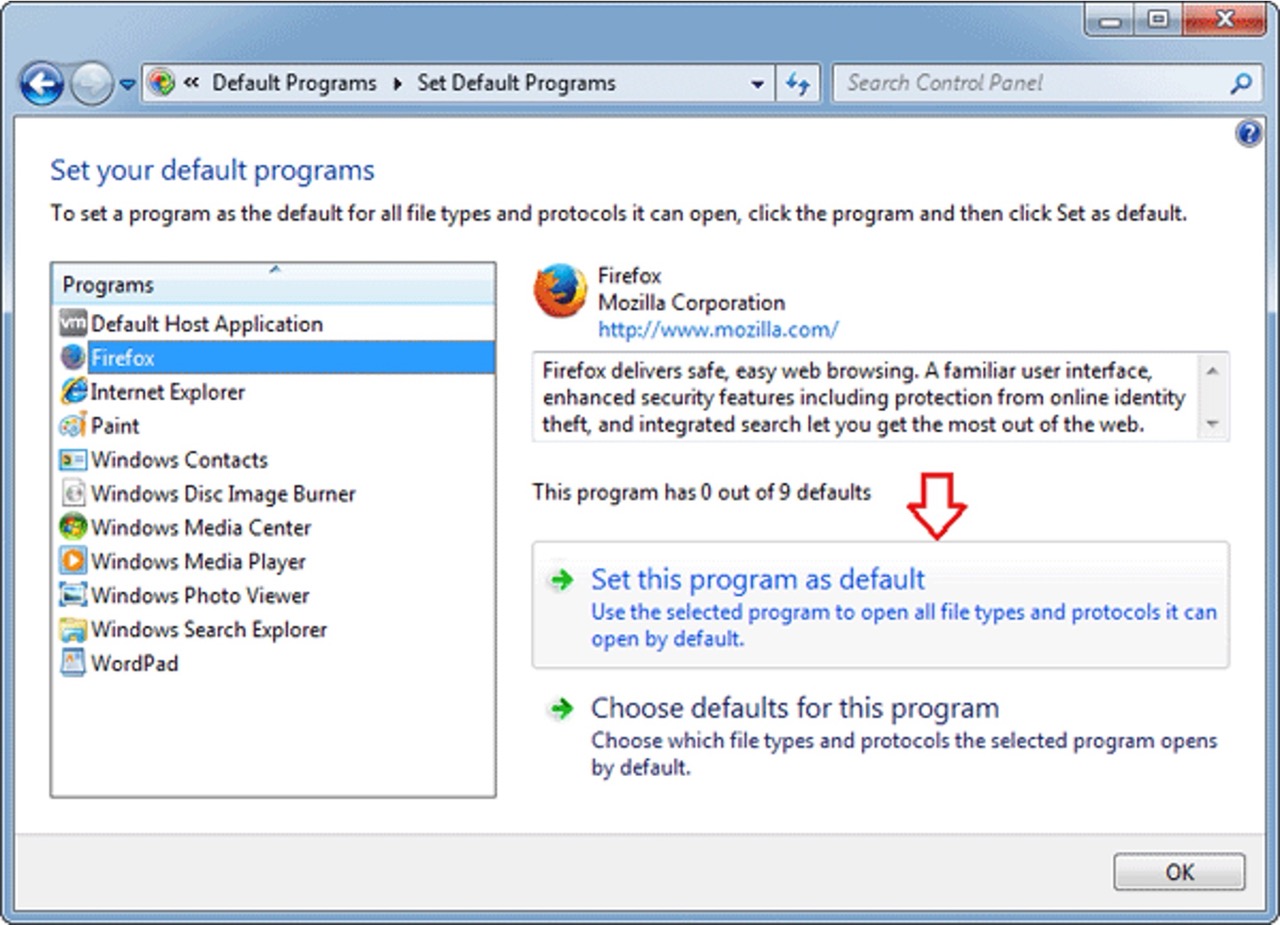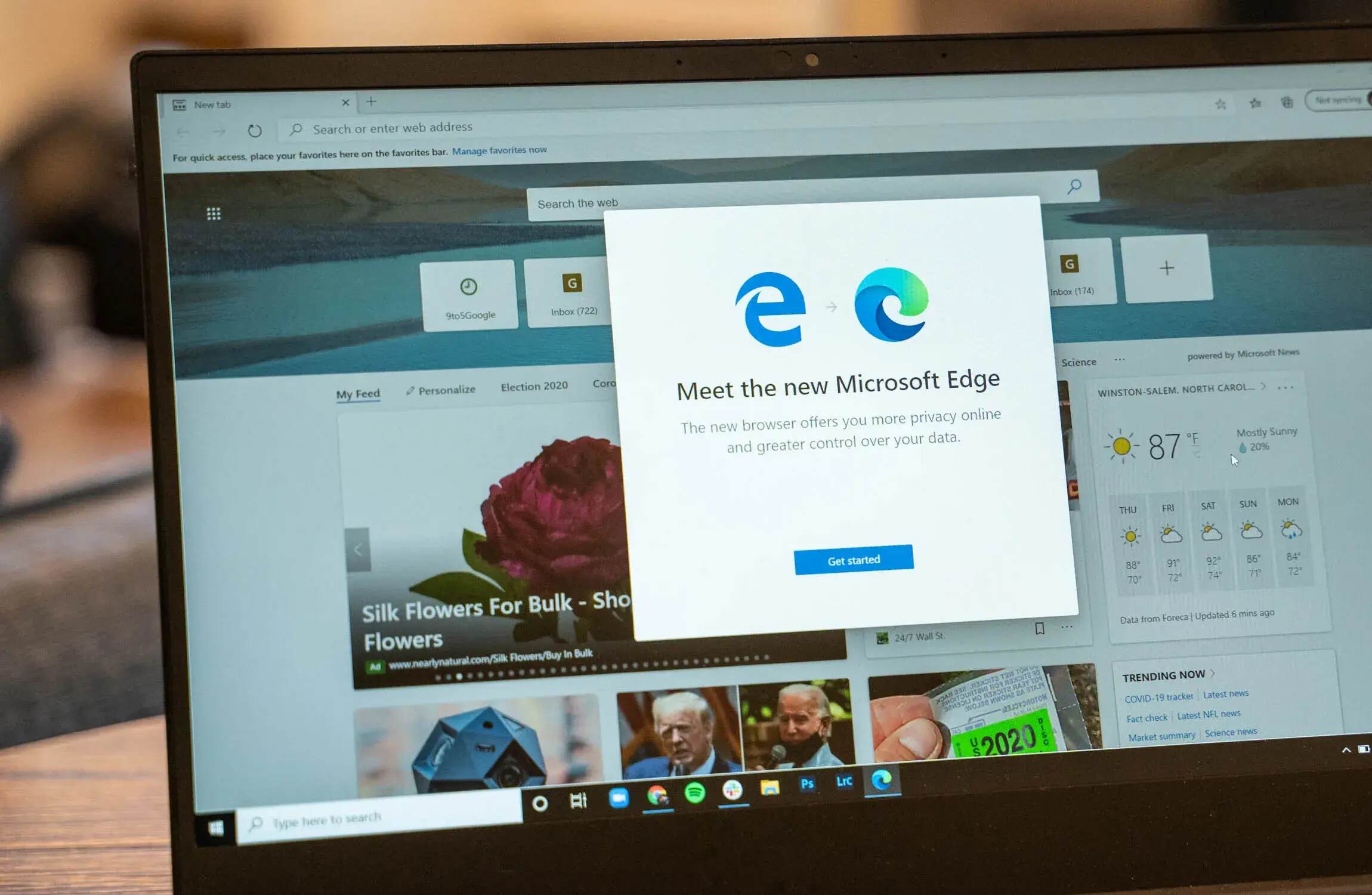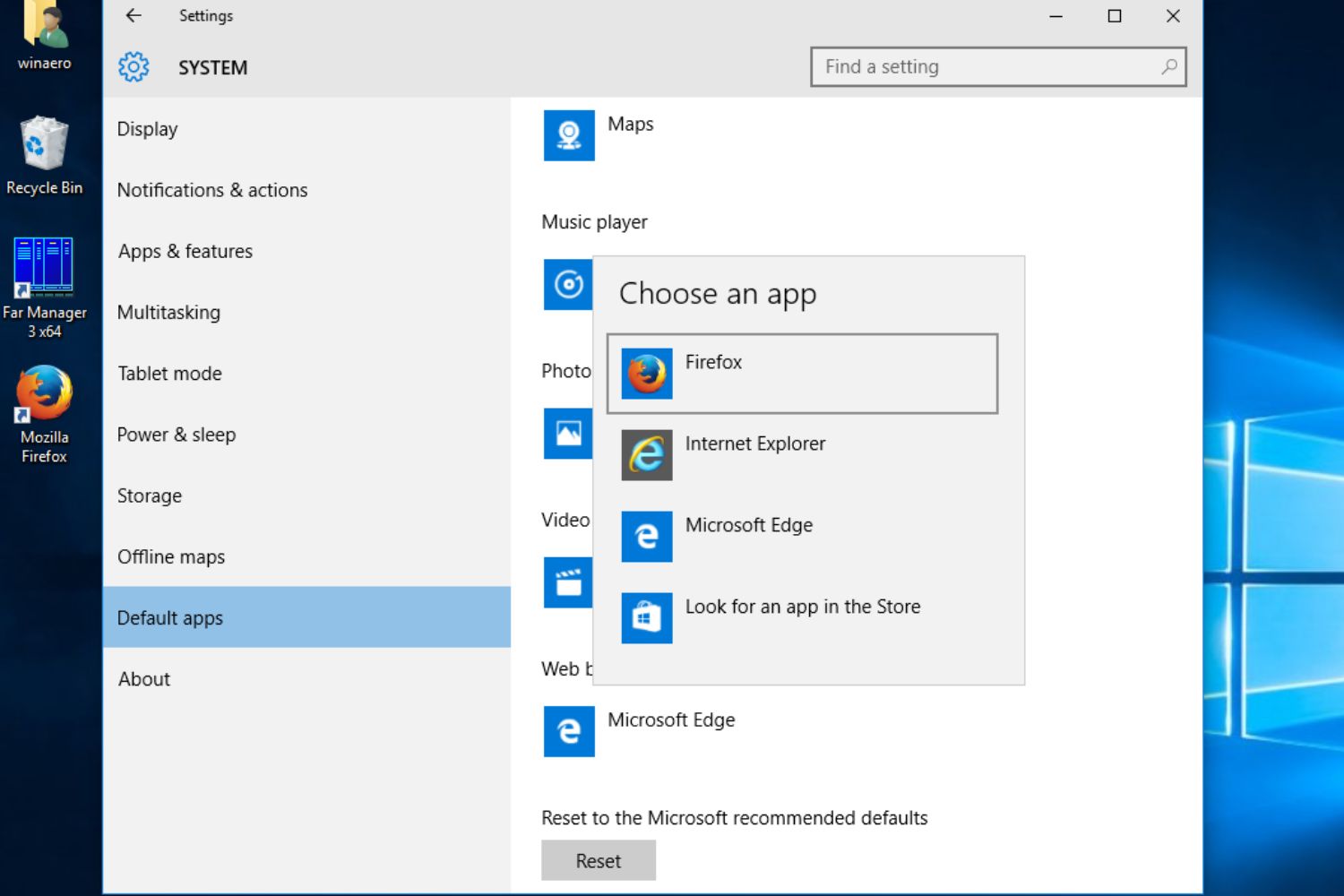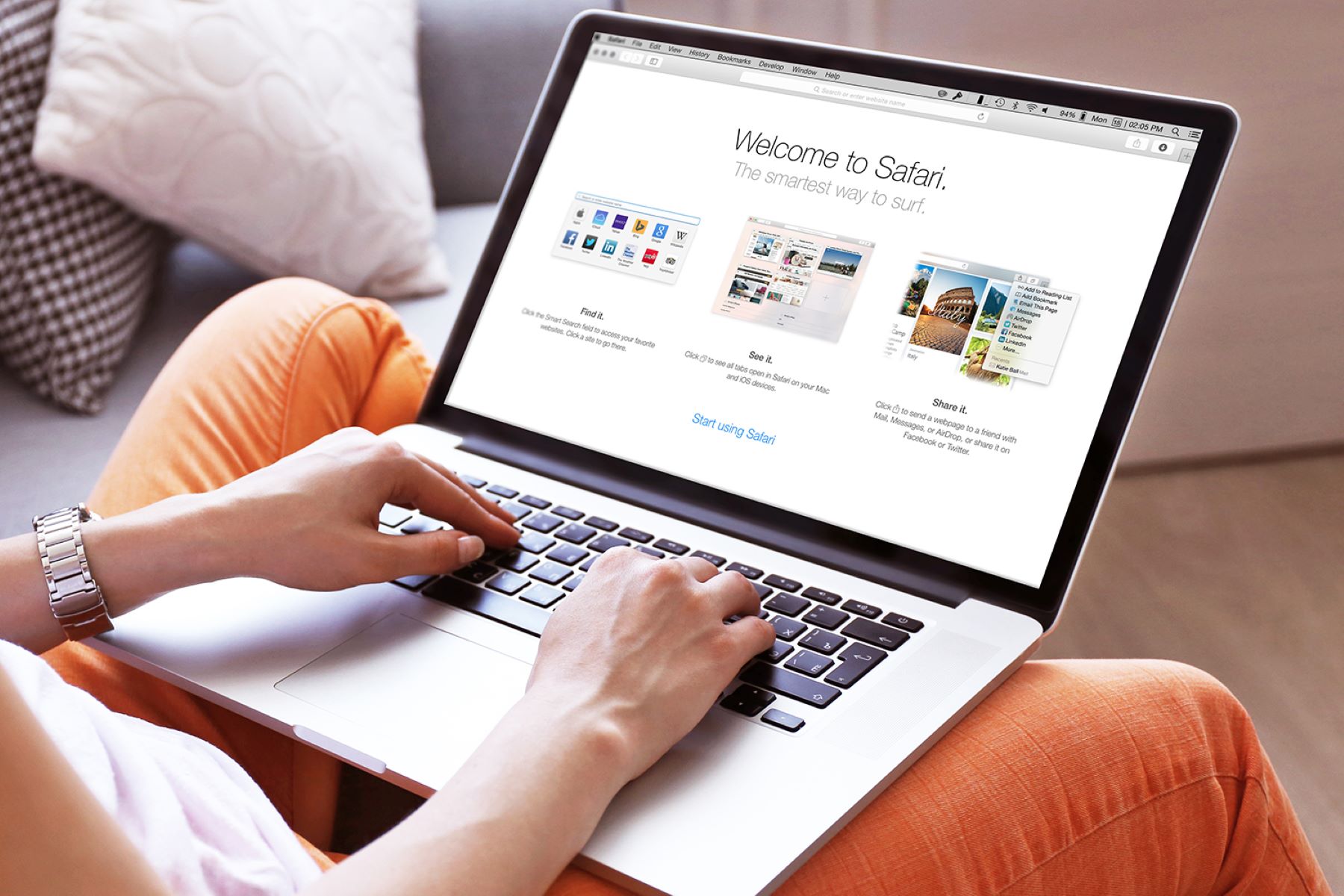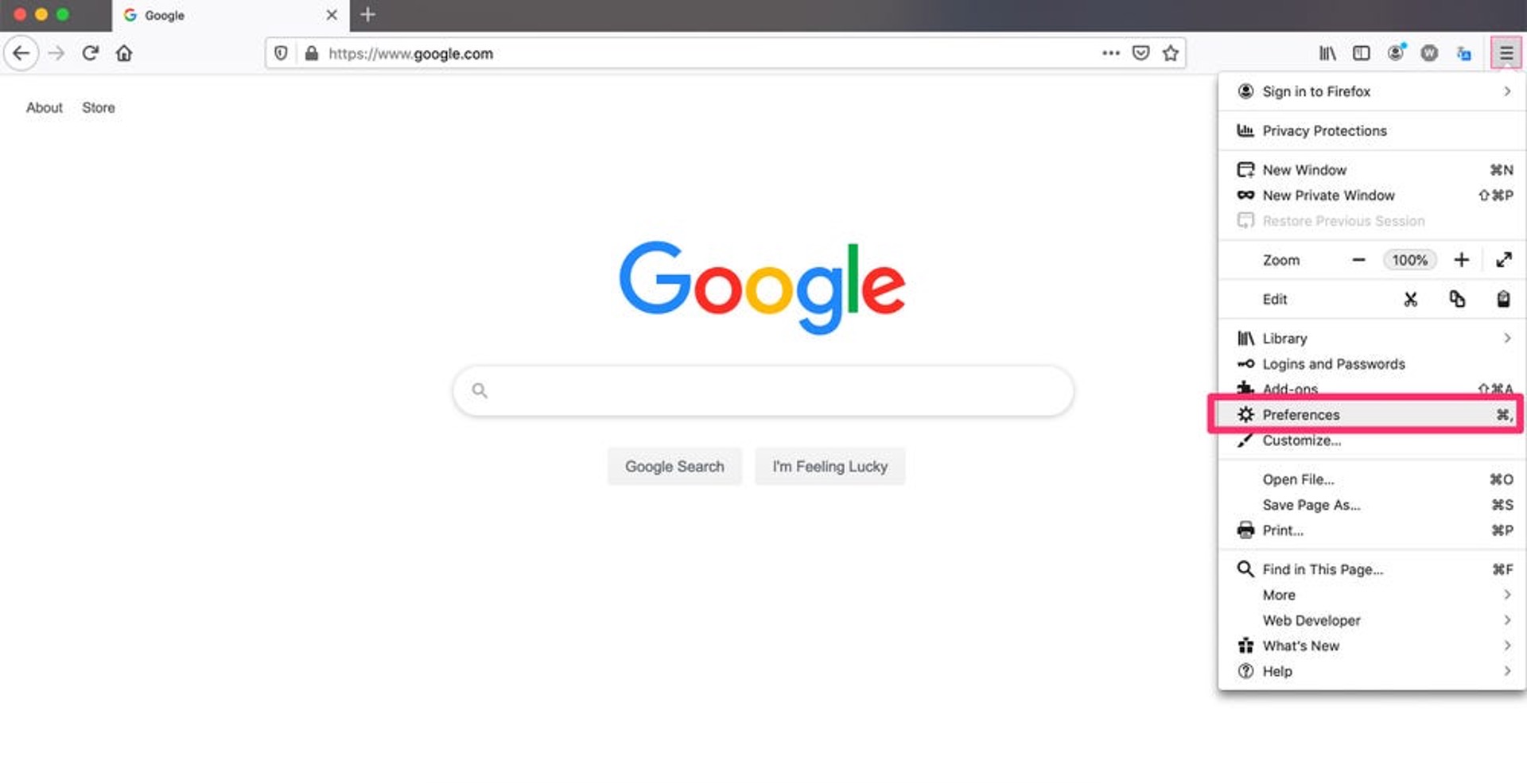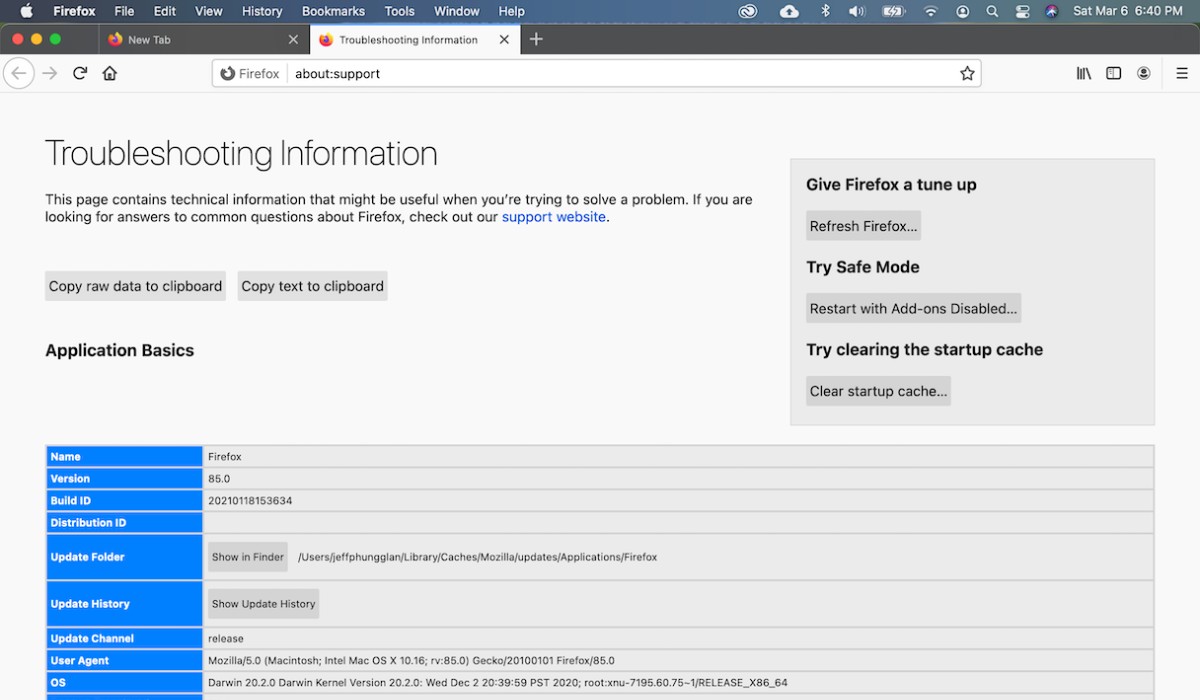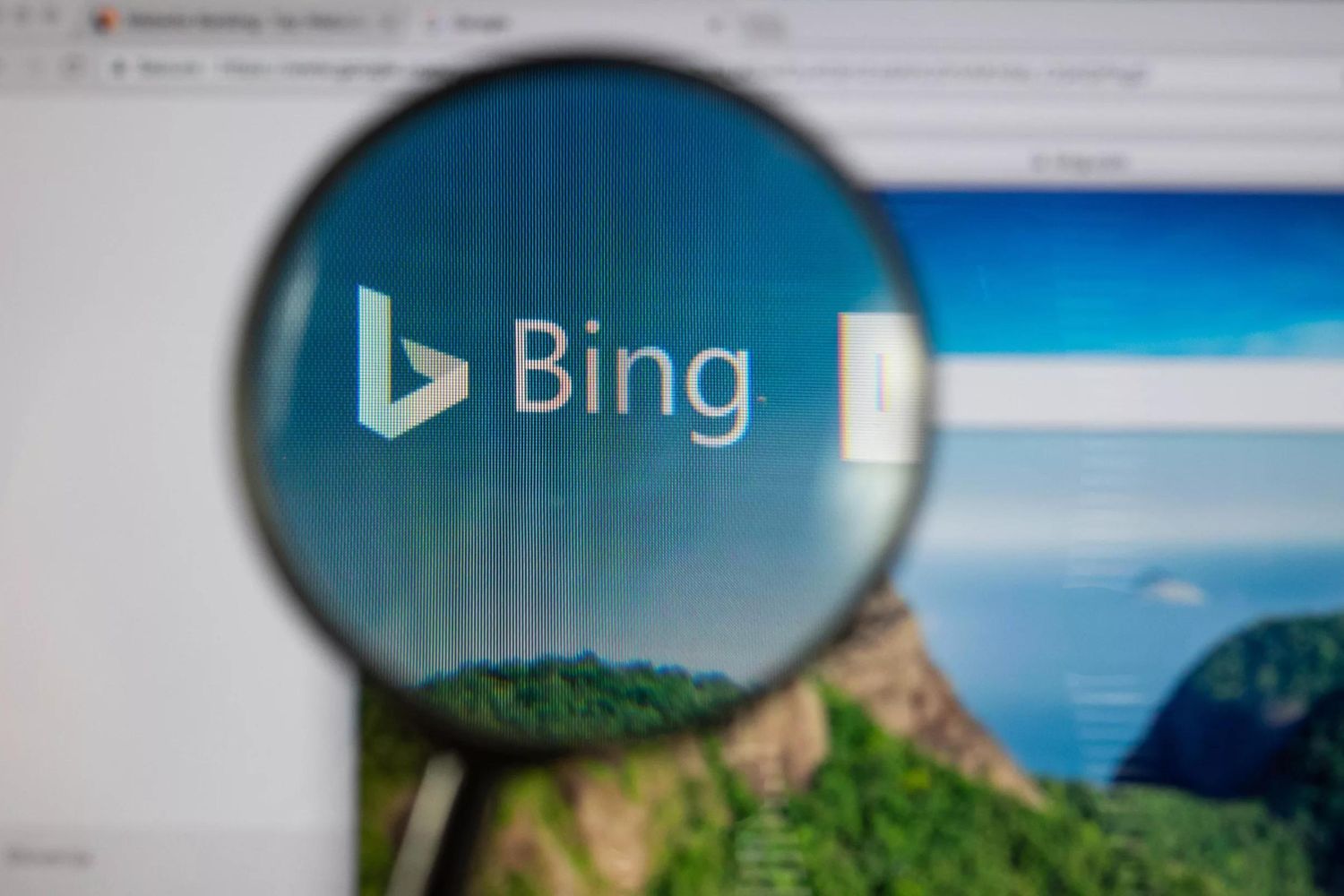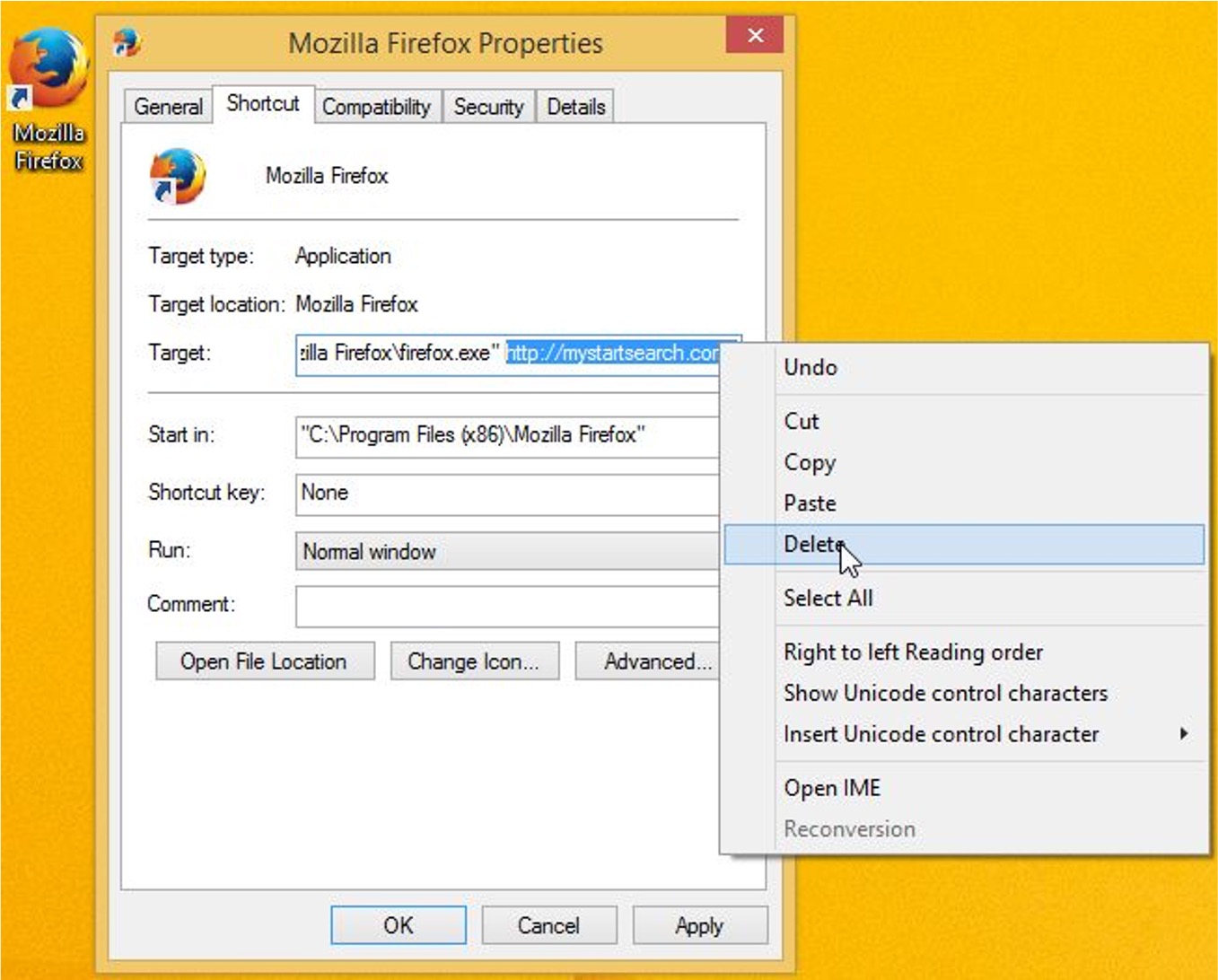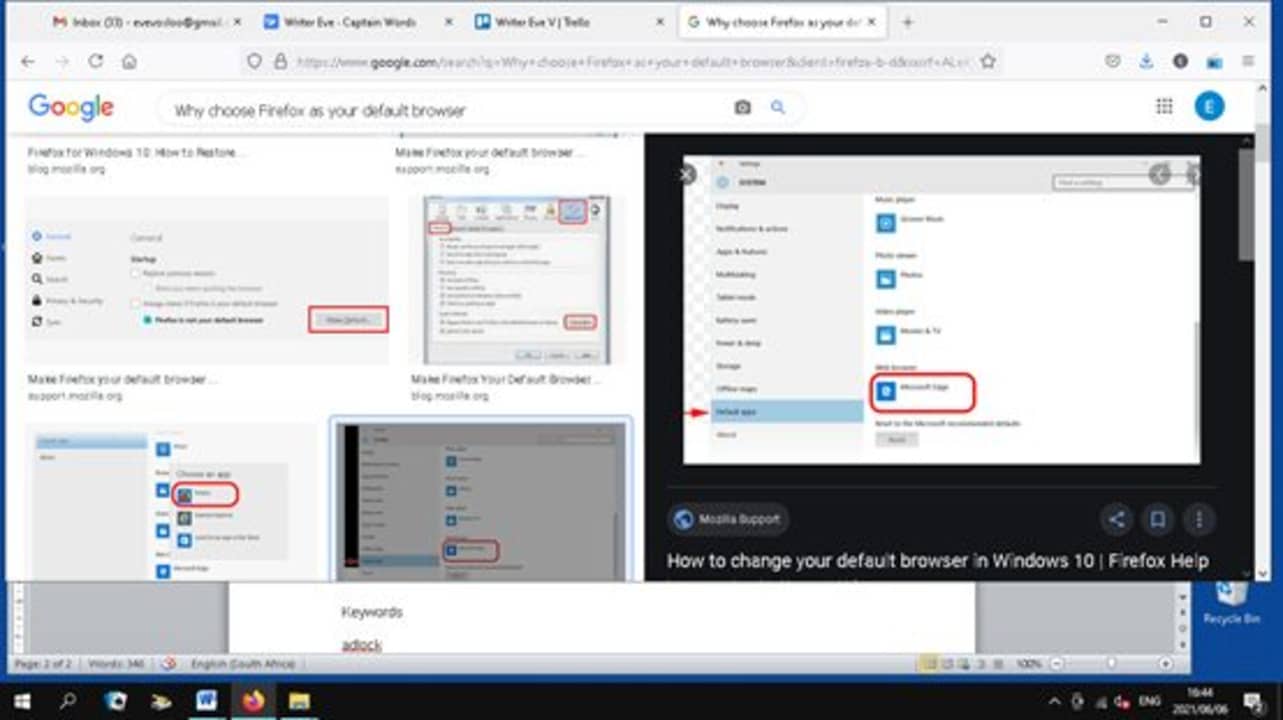Introduction
Making Firefox your default browser on Windows 7 can significantly enhance your browsing experience. Firefox is renowned for its speed, security, and customizable features, making it a popular choice for users seeking a versatile and efficient web browser. By setting Firefox as your default browser, you can seamlessly access web links, HTML files, and various online content with just a click, streamlining your online activities and maximizing productivity.
In this guide, you will learn how to make Firefox your default browser on Windows 7. Whether you're a seasoned Firefox user or new to the browser, this step-by-step process will empower you to harness the full potential of Firefox as your primary gateway to the internet. With its robust performance and extensive array of add-ons, Firefox offers a dynamic and personalized browsing experience, tailored to your preferences and requirements.
By following the simple instructions outlined in this guide, you can effortlessly configure Firefox as your default browser, ensuring that all web-related activities seamlessly integrate with Firefox's intuitive interface and powerful features. Whether you're drawn to Firefox's extensive library of extensions, its privacy-focused browsing options, or its user-friendly interface, setting it as your default browser will enhance your overall web experience.
Now, let's delve into the steps to make Firefox your default browser on Windows 7, unlocking a world of possibilities and convenience as you navigate the vast landscape of the internet.
Step 1: Open Default Programs
To begin the process of setting Firefox as your default browser on Windows 7, you'll first need to access the Default Programs settings. This straightforward procedure allows you to customize your default applications, ensuring that your preferred software is seamlessly integrated into your daily digital activities.
Here's how to open Default Programs on Windows 7:
-
Click on the Start Menu: Located at the bottom-left corner of your screen, the Start Menu is the gateway to accessing various system settings and applications on your Windows 7 computer.
-
Select Control Panel: Within the Start Menu, navigate to the Control Panel option. This centralized hub of system settings enables you to manage and customize various aspects of your computer's operation.
-
Choose "Programs": Within the Control Panel, locate and click on the "Programs" option. This section encompasses settings related to default programs, program features, and program access and defaults.
-
Click on "Default Programs": Once in the Programs section, you will find the "Default Programs" option. Click on this to access a range of settings related to default applications, file associations, and protocols.
-
Select "Set Your Default Programs": Within the Default Programs menu, you will find the "Set Your Default Programs" option. Click on this to proceed to the next step.
By following these steps, you will successfully open the Default Programs settings on your Windows 7 computer, laying the groundwork for configuring Firefox as your default browser. This straightforward process sets the stage for seamlessly integrating Firefox into your daily browsing activities, ensuring a smooth and efficient web experience tailored to your preferences and needs.
Step 2: Set Firefox as Default Browser
Now that you have accessed the Default Programs settings on your Windows 7 computer, you are ready to proceed with setting Firefox as your default browser. This pivotal step ensures that all web-related activities seamlessly integrate with Firefox, empowering you to harness its robust performance and customizable features as your primary gateway to the internet.
Here's a detailed guide on how to set Firefox as your default browser on Windows 7:
-
Locate Firefox in the Program List: Within the "Set Your Default Programs" menu, you will find a list of installed programs on your computer. Scroll through the list to locate Mozilla Firefox, the popular web browser known for its speed, security, and extensive range of add-ons.
-
Select Firefox as the Default Program: Once you have located Firefox in the program list, click on it to highlight the program. This action will reveal a range of options related to Firefox's default settings and capabilities.
-
Choose "Set this program as default": Within the options presented for Firefox, you will find the "Set this program as default" button. Click on this to designate Firefox as your default browser, ensuring that all web links and HTML files open directly in Firefox when accessed.
By following these steps, you will successfully set Firefox as your default browser on Windows 7, seamlessly integrating its powerful features and user-friendly interface into your daily web activities. This straightforward process ensures that Firefox becomes your primary gateway to the internet, offering a dynamic and personalized browsing experience tailored to your preferences and requirements.
With Firefox as your default browser, you can explore the vast landscape of the internet with enhanced speed, security, and convenience. Whether you're drawn to Firefox's extensive library of extensions, its privacy-focused browsing options, or its intuitive interface, setting it as your default browser unlocks a world of possibilities and efficiency as you navigate the digital realm.
By configuring Firefox as your default browser, you are poised to experience a seamless and efficient web experience, tailored to your preferences and needs. With its robust performance and extensive array of add-ons, Firefox offers a dynamic and personalized browsing experience, ensuring that your online activities are streamlined and optimized for productivity.
Now that you have successfully set Firefox as your default browser on Windows 7, you are ready to confirm the change and embark on a seamless and efficient web experience tailored to your preferences and needs.
Step 3: Confirm the Change
After setting Firefox as your default browser on Windows 7, it's essential to confirm the change to ensure that all web-related activities seamlessly integrate with Firefox's intuitive interface and powerful features. This confirmation step serves as a final reassurance that Firefox is now your primary gateway to the internet, streamlining your online activities and maximizing productivity.
To confirm the change and verify that Firefox is indeed your default browser, follow these simple steps:
-
Open a Web Link: To confirm that Firefox is your default browser, open a web link from an email, document, or any other source. Clicking on the link should prompt Firefox to launch and display the web page. This seamless redirection to Firefox indicates that it has been successfully set as your default browser.
-
Access an HTML File: Similarly, you can confirm the change by opening an HTML file on your computer. Double-click the HTML file, and it should automatically open in Firefox, showcasing its status as the default browser for handling HTML content.
-
Check Default Programs Settings: For additional confirmation, revisit the Default Programs settings on your Windows 7 computer. Within the Default Programs menu, navigate to the "Set Your Default Programs" option and locate Firefox in the list of installed programs. It should be designated as the default program for web browsing, solidifying its status as your primary browser.
By following these steps to confirm the change, you can ensure that Firefox is seamlessly integrated into your daily web activities, offering a dynamic and personalized browsing experience tailored to your preferences and requirements. This final verification step cements Firefox as your default browser, empowering you to explore the vast landscape of the internet with enhanced speed, security, and convenience.
With Firefox as your default browser, you can navigate the digital realm with confidence, knowing that its robust performance and extensive array of add-ons are at your fingertips. Whether you're drawn to Firefox's privacy-focused browsing options, its intuitive interface, or its extensive library of extensions, confirming it as your default browser unlocks a world of possibilities and efficiency as you engage with online content and services.
By confirming the change and embracing Firefox as your default browser on Windows 7, you are poised to experience a seamless and efficient web experience, tailored to your preferences and needs. This confirmation step ensures that all web-related activities seamlessly integrate with Firefox, solidifying its role as your trusted companion in the digital realm.
Conclusion
In conclusion, by following the simple yet impactful steps outlined in this guide, you have successfully made Firefox your default browser on Windows 7. This strategic decision empowers you to harness the full potential of Firefox as your primary gateway to the internet, offering a seamless and efficient web experience tailored to your preferences and needs.
Setting Firefox as your default browser not only enhances your browsing experience but also ensures that all web-related activities seamlessly integrate with Firefox's intuitive interface and powerful features. With its robust performance, extensive array of add-ons, and privacy-focused browsing options, Firefox stands as a reliable companion in your digital endeavors.
By designating Firefox as your default browser, you have unlocked a world of possibilities and efficiency as you navigate the vast landscape of the internet. Whether you are drawn to Firefox's speed, security, or its user-friendly interface, this strategic choice ensures that your online activities are streamlined and optimized for productivity.
With Firefox as your default browser, you can explore the digital realm with confidence, knowing that its dynamic and personalized browsing experience is tailored to your preferences and requirements. Whether you are accessing web links, HTML files, or various online content, Firefox seamlessly integrates into your daily web activities, offering enhanced speed, security, and convenience.
Embracing Firefox as your default browser on Windows 7 signifies a commitment to a seamless and efficient web experience, ensuring that your digital interactions are optimized for productivity and tailored to your preferences. This strategic decision cements Firefox as your trusted companion in the digital realm, empowering you to engage with online content and services with confidence and ease.
In making Firefox your default browser, you have embraced a versatile and efficient web browser that adapts to your needs and preferences, offering a dynamic and personalized browsing experience. With its extensive library of extensions, customizable features, and commitment to user privacy, Firefox stands as a reliable and empowering tool in your digital toolkit.
Congratulations on successfully setting Firefox as your default browser on Windows 7. Embrace the enhanced speed, security, and convenience that Firefox offers, and embark on a seamless and efficient web experience tailored to your preferences and needs.







